Abortion, Climate, Guns and Religion: Supreme Court Poised for a Sharp Right Turn
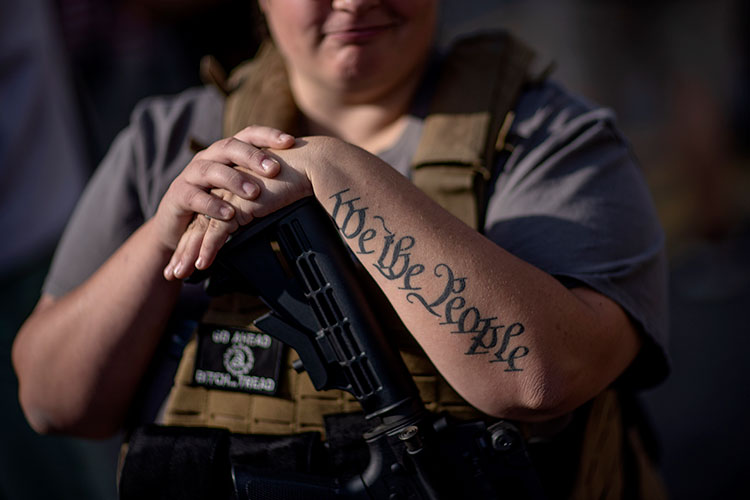
With the nation already roiled by a draft ruling to restrict abortion rights, the U.S. Supreme Court appears poised to deliver additional conservative decisions in coming weeks on some of the most divisive issues facing the nation, UC Berkeley legal scholars said.
In the draft decision published last week, the court indicated that it will overturn the landmark 1973 ruling in Roe v. Wade that legalized abortion. But the court is also expected to rule on major cases involving climate change, gun regulation and the advance of religion into public education.
In their selection of cases for review, and in oral arguments on those cases, the court’s dominant conservative majority has signaled a readiness to turn U.S. law sharply to the right, even at a cost of further controversy and polarization, the scholars said.
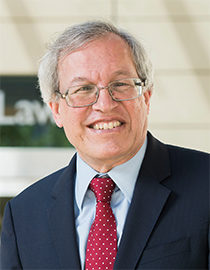
“We’re on the verge of a dramatic change in so many areas of constitutional law,” said Berkeley Law Dean Erwin Chemerinsky, one of the nation’s foremost court authorities. “In 1937, there was a dramatic change (in the court’s orientation), and I think that this is going to be comparable to that. … These are five justices who are very far to the right on the spectrum — certainly further right than the American people overall are.”
”They’re from the 30% of the public that want to overrule Roe v. Wade,” Chemerinsky said. “They want to dramatically expand the protection of gun rights. They have no belief in a wall that separates church and state. They’re very hostile to affirmative action. Think of the most conservative parts of the Republican platform — that’s where they are.”
How assertively will the justices push such an agenda? That will become clearer by the end of June, when the court issues the last of its decisions for this term. But in all of the cases, the Berkeley scholars said, the conservative bloc has expressed skepticism about lower court decisions and earlier precedents, and a willingness to take an activist approach that favors the most conservative end of the nation’s political and religious spectrum.
Chemerinsky and other Berkeley scholars are following five cases, in particular, that may come to define a history-making year for the Supreme Court.
Brick by brick: Removing the wall between church and state
The court is hearing two cases on the separation of church and state — and in the view of Berkeley Law scholar Sarah Song, “the court seems poised to move away from separation and toward robust government accommodation of religion.”
Historically, the argument for a strict separation goes all the way back to Thomas Jefferson, one of the architects of the American system. But under pressure by conservative Christians, the terms of debate have been shifting, Song said.
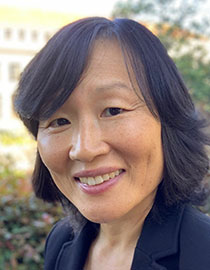
In Kennedy v. Bremerton School District, a high school football coach in Washington state has insisted that he has the right to pray on the football field after games. The school district, based on past legal rulings, has insisted that he puts the school at legal risk by doing so.
Is the school district protecting football players and other students from subtle religious coercion by a school official? Or is it restricting the coach’s free speech and exercise of religion?
In the second case, Carson v. Makin, the court will rule on a conflict that originates in rural Maine, where some families live far from public high schools. A taxpayer-funded state program provides financial aid so that they can send their children to schools at a distance, including private schools.
Today, she explained, the question is not whether government can allow religious expression in schools or give public funding to religious education, but rather whether the government violates the constitutional right to free exercise of religion if it denies support to religious institutions.
“In light of that shift and now, given who’s on the court, there’s a supermajority of conservative justices who want to be very accommodating of religion,” she said. “So long as government doesn’t officially establish a church, there’s a lot of support that government can give to religion. … That’s where a majority of the court is today.”
Song predicted that both cases could have far-reaching repercussions, requiring government to broaden financial and other support to religion in public education and emboldening others to bring prayers into various dimensions of public school life.
“One animating idea of the First Amendment, including the religion clauses and the free speech clause, is about respecting everybody’s freedom,” Song said. “We live in a pluralistic society. There are so many faiths, and not everybody is religious.
“For the court to accommodate religion in this way — in our country’s ongoing contestation about the role of religion in politics — it’s definitely siding with religion.”
Challenging the government’s power to address climate change
Does the U.S. Environmental Protection Agency (EPA) have the power to regulate the emission of carbon dioxide and other greenhouse gases that cause climate change?
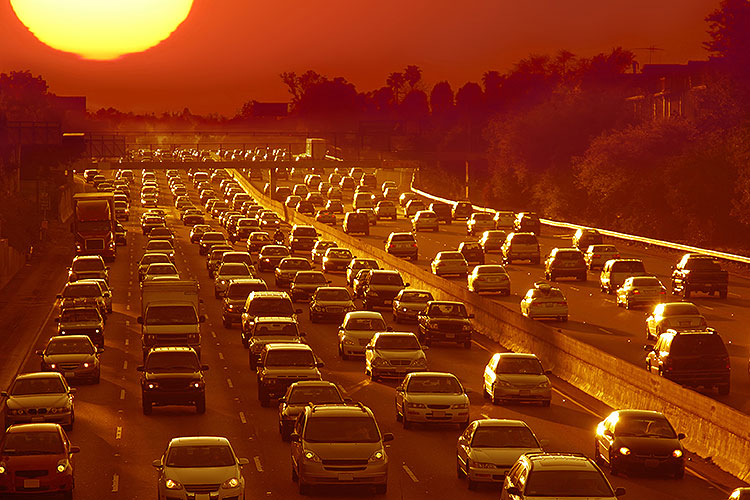
In West Virginia v. the U.S. Environmental Protection Agency, a coalition of states, power utilities and coal interests argues that an ambitious clean power plan crafted during the administration of President Barack Obama gave the EPA too much power to set policy.
The case is complex, but at the heart it features a challenge both to environmental regulation and to the powers of government departments and agencies that set and implement such regulations. Both have long been conservative targets.
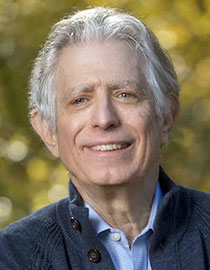
Berkeley Law professor Daniel Farber, faculty director of the Center for Law, Energy, & the Environment, described the case as a potential landmark and said it could have profound implications for the government’s efforts to address climate change and other environmental issues.
In the worst case scenario, the court’s conservative majority could even rule that the EPA has no authority to regulate greenhouse gases without express, specific direction from Congress, Farber said. But Congress is so divided that agreement on such direction would be all but impossible, he said, and in which case the government would have dramatically diminished powers to manage greenhouse gas emissions.
“It’s nearly certain that the court will cut back on EPA’s power,” Farber said. “It’s possible that it will leave EPA with only very modest authority to address the problem. That’s really important … because we’re talking about millions of tons of carbon emissions that would be affected.”
Farber said this “almost surely is going to be the court’s most important environmental decision” since 2007, when a less conservative Supreme Court first upheld the power of the EPA to address climate change.
The potential human costs of banning abortion
Do states have the power to sharply limit the availability of abortions for pregnant women, or even to ban abortion?
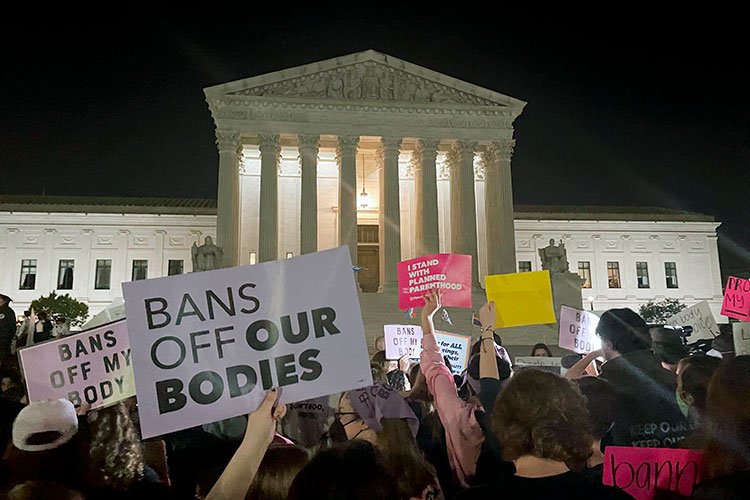
Dobbs v. Jackson (Miss.) Women’s Health Organization exploded into the news last week when a draft decision by the court’s conservative majority was leaked to the press. The draft was fiercely worded, rejecting the reasoning of earlier Supreme Court rulings and in effect overturning Roe v. Wade, the 1973 decision that legalized abortion.
The language of the decision could change, and so could the outcome. But few legal scholars expect the decision to shift. While most Americans say abortion should remain legal, conservatives have been looking to overturn Roe for decades — and now appear ready to make that happen.
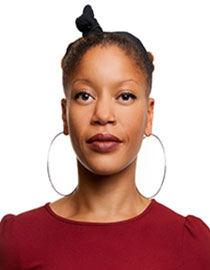
In interviews last week after the draft decision emerged, Berkeley Law scholars said the end of Roe could have devastating impacts on women’s health and work lives. Low-income women, especially low-income women of color, would be disproportionately harmed, said Khiara M. Bridges, an expert in reproductive law and justice.
But Bridges cited a profound, related threat: Hard-right forces may next seek to criminalize abortion, raising the specter that women who receive abortions and others who aid them could be fined or imprisoned.
“Anti-abortion advocates have always said that they don’t want to punish the people — women — who have abortions,” Bridges said. “They’ve always said that they only want to punish those who perform the abortions for women. But I think that it’s naive to believe that states will be uninterested in punishing pregnant people for terminating their pregnancies.”
Already, Bridges said, women have been prosecuted for suffering miscarriages and stillbirths.
A bill in Missouri would allow a private citizen to sue anyone who helps a Missouri woman to have an abortion, even if that person is not a state resident or subject to Missouri laws. And just after the court’s draft decision emerged last week, Louisiana lawmakers advanced a measure allowing murder charges against women who have abortions.
“I fully expect that after Roe falls, we will punish pregnant people who intentionally terminate their pregnancies,” Bridges said. “The people who will be swept into our carceral system then will be the ones who are already overrepresented in that system now — Black people, Latinx people, poor people and people with disabilities.”
Expanding permission to carry concealed weapons
How tightly can New York and other states regulate licenses that allow residents to carry concealed weapons outside of their homes?
The Second Amendment to the Constitution, written in 1791, says in simple language that people have the right to bear arms for militia service. And until 2008, Chemerinsky said, the Supreme Court never struck down a federal, state or local gun regulation. But in 2008, a landmark Supreme Court ruling held that individuals have the right to possess firearms unrelated to militia service for purposes such as self-protection in the home.
Now, in New York State Rifle & Pistol Association Inc. v. Bruen, the court will assess how much power states have to regulate licenses to carry concealed weapons outside the home. It could be the most important gun control decision since 2008, Chemerinsky said.
The court could decide to allow continued government regulations, he explained. The majority could reason that concealed guns are dangerous to police, and that historically, carrying a concealed weapon has not been a protected right.
But he said such an outcome appears unlikely.
The court could take a moderate approach, allowing government continued discretion in regulating concealed weapons. In that case, Chemerinsky said, the key could be what sort of guidelines the court prescribes for granting a concealed weapons permit.
But under the most likely scenarios, he predicted, the court will “greatly limit the ability of the government to restrict concealed weapons in public.”
